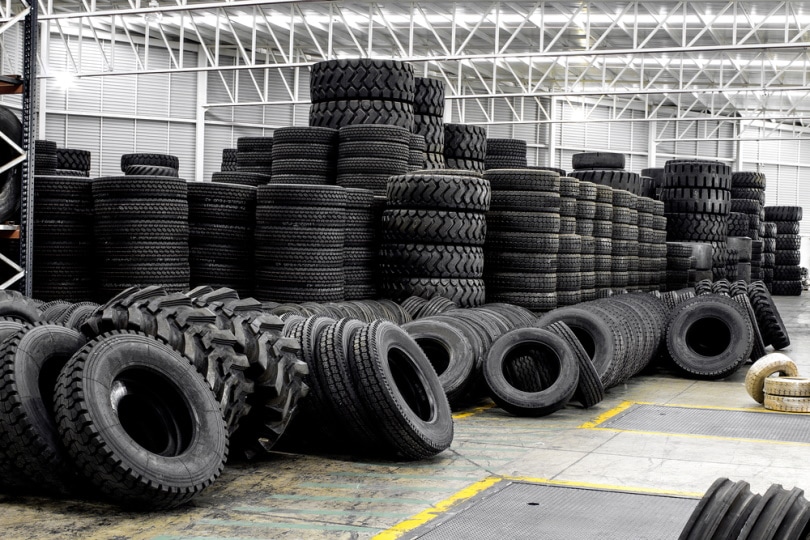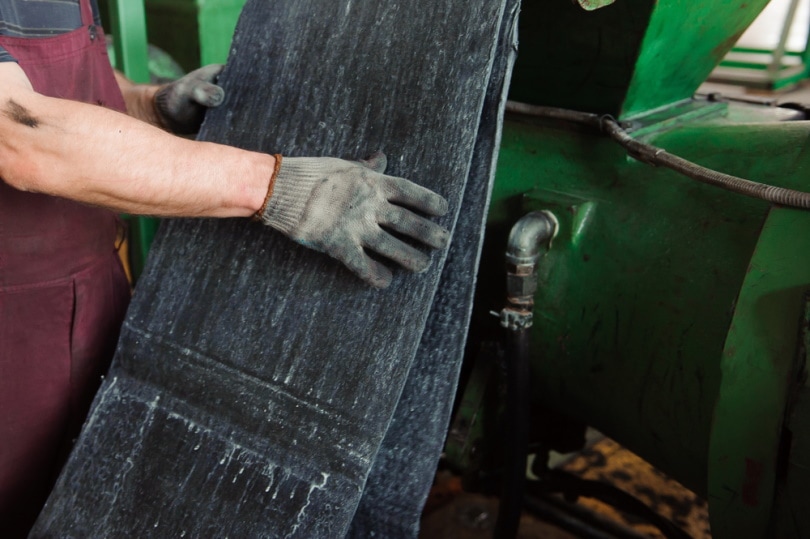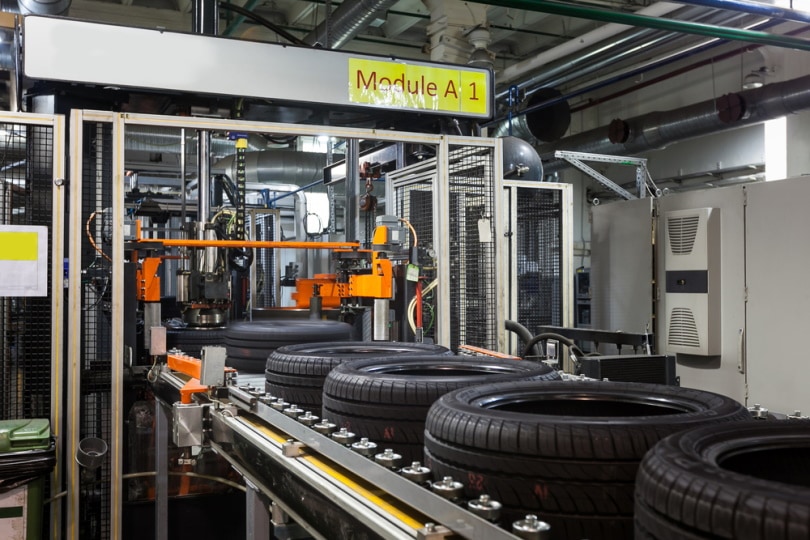What Are Tires Made Of? Materials, Parts & Manufacturing
-
Pete Ortiz
- Last updated:

Tires are all around us. They are on every vehicle on the road, and they can be found on wagons, riding lawn mowers, dirt bikes, forklifts, and almost anything else that moves. Tires are an integral part of modern life. But what exactly are they made of? How are these critical components made?
Tires are made largely of rubber and synthetic rubber materials. But that is not all they are made out of. Modern tires can have up to 200 different types of raw materials within their composition.
Tires are manufactured using a complex process that puts all the pieces of the tire together and then cures them into a continuous circle that everyone recognizes. Tires are not just one piece. They’re made up of seven distinct parts and layers that come together to offer performance for years at a time. Continue reading to learn more.
A Complex Mixture of Materials
Tires are primarily made out of rubber. Rubber is more complicated than ever before. Modern economies phased out the use of natural rubber, which was harvested from special rubber trees during the 19th and early 20th centuries and switched to synthetic rubber. Synthetic rubber is made in a lab and is specifically put together for various purposes. A single tire can have multiple different types of synthetic rubber within it at any given time making up different parts of the tire.
Other common materials found in tires include silica, oil, carbon, glue, polyester, and nylon. The materials used in different tires will change based on the tire’s size and purpose. A large tire for a dump truck and a tire for a race car will have different materials because the tires have very different purposes.
Through and through, the most common material used in a tire is still rubber.

The Parts of a Tire
There are seven different parts that go into making a tire. Many people think that tires are just one piece, or they get the tire and the wheel confused. Tires are complicated and multilayered.
- Bead: The bead is a bundle of metal wires that help the tire grip the wheel. The beads help prevent the tire from slipping off the wheel during use.
- Bead Filler: Bead filler is usually a synthetic rubber compound put atop or around the bead to help with stability and handling.
- Belts: Belts are found underneath the tread and provide a layer of stability and strength supporting the tread. Belts are often made of tough materials such as polyester and nylon mixed with a steel mesh.
- Body Ply: Body plies are the layers that give your tire form and support. These layers are made from rayon and rubber, and they maintain the strength and integrity that keeps the air pressure inside the tire, keeping everything inflated.
- Inner Liner: The inner liner works with the body ply to keep air pressure within the tire. The inner liner is the inside support that underlays the body ply to keep the tire inflated during use.
- Sidewall: The sidewall is the part of the tire you see when you look side-on at a car. It is the tough outer shell that helps prevent scuffs, weathering, and punctures. This is the part of the tire you kick when you are kicking the tires.
- Tread: The tread is the textured portion of the tire that travels over the road. This is an important part of the tire and is the part that wears down over time from extended use.
The Tire Manufacturing Process
Tires start their lives as sheets of sticky gum-like rubber. Engineers mix batches of synthetic rubber with different qualities for different parts of the tires. The batches of rubber are then rolled out into sheets and separated. Each sheet is then sent off to a machine that will cut it into the shape that it needs to be. For example, one sheet will get sent off to be cut into sidewall portions while another sheet will be run through a machine that prepares it to be an inner liner.
Once the layers of the tire have been cut into the form, the tire is assembled from the inside out. Tire manufacturers usually start with the inner liner, then they add the body ply and then the belts then the sidewall, and finally the tread layer.
After all of the layers of the tire have been properly aligned and put together, the tire is sent off to cure. An uncured tire is referred to as a green tire. The green tires are put into special molds that will put the treat and identifying information into the surface of the tire. The tires are cured at 300 F. The curing process binds the tire together, so the different layers do not come apart during use.
After the tire is cured, it’s sent off for final testing. Tires are randomly selected from a batch to test for quality, integrity, strength, and cohesion. If a batch is deemed successful, the tires are sent off to be shipped out to retailers and consumers.

Conclusion
Tires may seem simple at first glance, but they are actually very complicated products that are the result of years of specialized design and engineering. Tires are multilayered products that are specifically made to do a job for many years. Tires have seven distinct parts and layers which are put together in advanced factories before they are shipped to you and your car. Next time you find yourself looking at a tire, think about all of the science, engineering, and work that goes into making each and every one.
Featured Image Credit: Jesus Cervantes, Shutterstock
Contents


